【原创】The solutional manual of the Verilog HDL: A Guide to Digital Design and Synthesis (2nd)--ch09
Chapter 9. Useful Modeling Techniques
9.7 Exercises
1. Using assign and deassign statements, design a positive edge-triggered D-flipflop with asynchronous clear(q=0) and preset (q=1).
my answer:
2. Using primitive gates, design a 1-bit full adder FA. Instantiate the full adder inside a stimulus module. Force the sum output to a & b & c_in for the time between 15 and 35 units.
my answer:
3. A 1-bit full adder FA is defined with gates and with delay parameters as shown below.
// Define a 1-bit full adder
module fulladd(sum,c_out,a,b,c_in);
parameter d_sum=0,d_cout=0;
//I/O port declarations
output sum,c_out;
input a,b,c_in;
//Internal nets
wire s1,c1,c2;
//Instantiate logic gate primitives
xor(s1,a,b);
and(c1,a,b);
xor #(d_sum) (sum,s1,c_in); //delay on output sum is d_sum
and (c2,s1,c_in);
or #(d_out) (c_out,c2,c1); //delay on output c_out is d_cout
endmodule
Define a 4-bit full adder fulladd4 as shown in example 5-8, but pass the following parameter values to the instances, using the two methods discussed in the book.
|
Instance |
Delay Values |
|
fa0 |
d_sum=1,d_cout-1 |
|
fa1 |
d_sum=2,d_cout=2 |
|
fa2 |
d_sum=2,d_cout=2 |
|
fa3 |
d_sum=3,d_cout=3 |
a. Build the fulladd4 module with defparm statements to change instance parameter values. Simulate the 4-bit full adder using the stimulus shown is example 5-9 . Explain the effect of the full adder delays on the times when outputs of the adder appear. ( Use delays of 20 instead of 5 used in this stimulus. )
b. Build the fulladd4 with delay values passed to instances fa0, fa1, fa2, fa3 during instantiation. Resimulate the 4-bit adder, using the stimulus above. Check if the results are identical.
my answer:
4. Create a design that uses the full adder example above. Use a conditional compilation (`ifdef). compile the fulladd4 with defparam statements if the text macro DPARAM is defined by the `define statement; otherwise, compile the fulladd4 with module instance parameter values.
my answer:
6. What will be the output of the $display statement shown below?
my answer:
# I am inside instance top.a1.b1
7. Consider the 4-bit full adder in example 6-4. Write a stimulus file to do random testing of the full adder. Use a random number generator to generate a 32-bit random number. Pick bit 3:0 and apply them to input a; pick bits 7:4 and apply them to input b. Use bit 8 and apply it to c_in. Apply 20 random test vectors and observe the output.
my answer:
8. Use the 8-bit memory initialization example in example 9-14 . Modify the file to read data in hexadecimal. Write a new data file with the following addresses and data values. Unspecified locations are not initialized.
|
Location Address |
Data |
|
1 |
33 |
|
2 |
66 |
|
4 |
z0 |
|
5 |
0z |
|
6 |
01 |
my answer:
9. Write an initial block that controls the VCD file. The initial block must do the following:
l Set myfile.dmp as the output VCD file.
l Dump all variables two levels deep in module instance top.a1.b1.c1.
l Stop dumping to VCD at time 200.
l Start dumping to VCD at time 400.
l Stop dumping to VCD at time 500.
l Create a checkpoint. Dump the current value of all VCD variables to the dumpfile.
my answer:



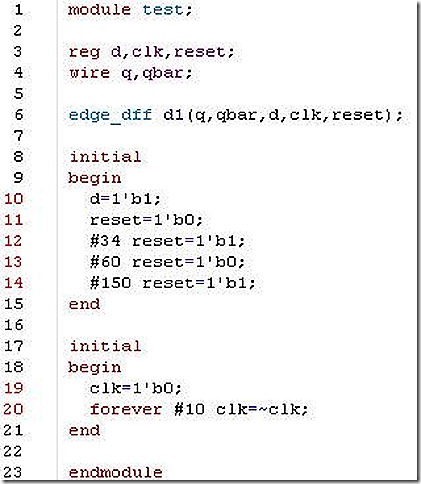

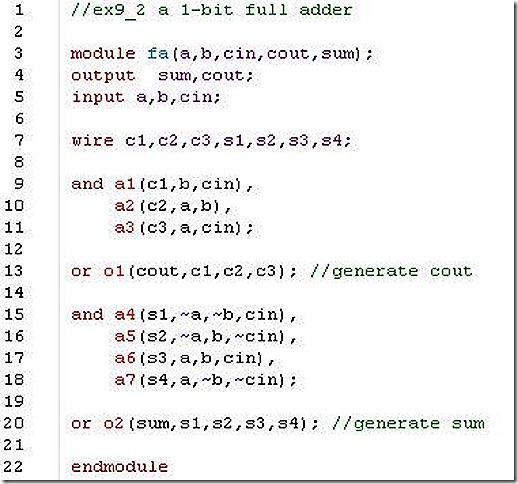
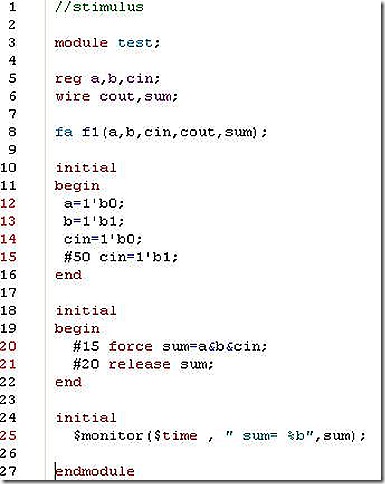


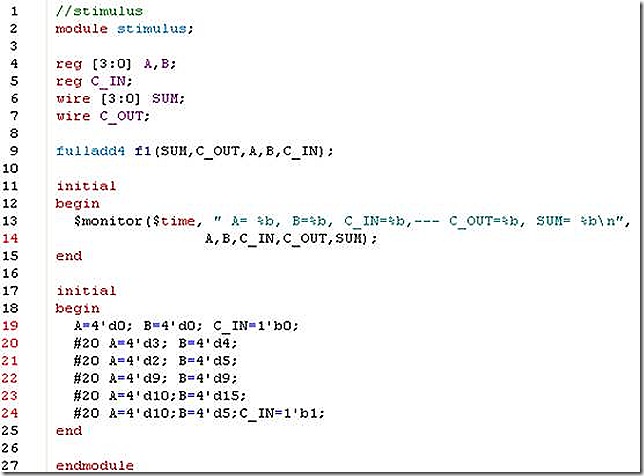
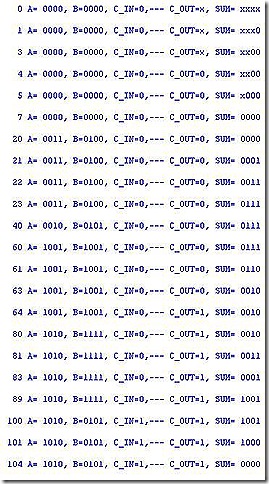
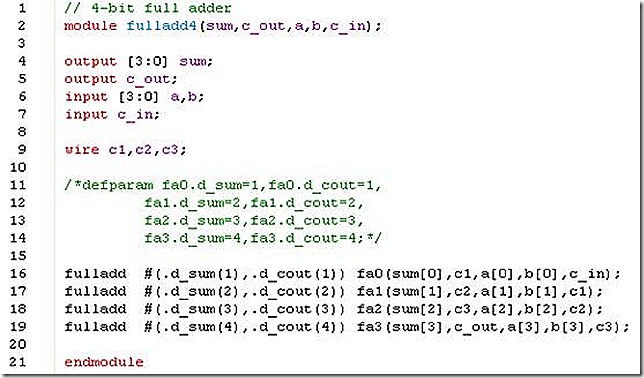
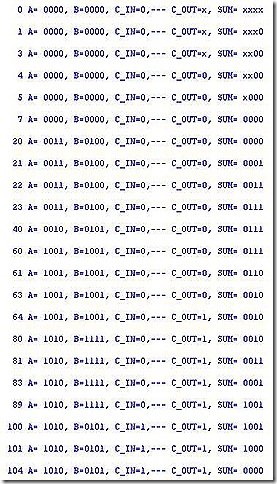


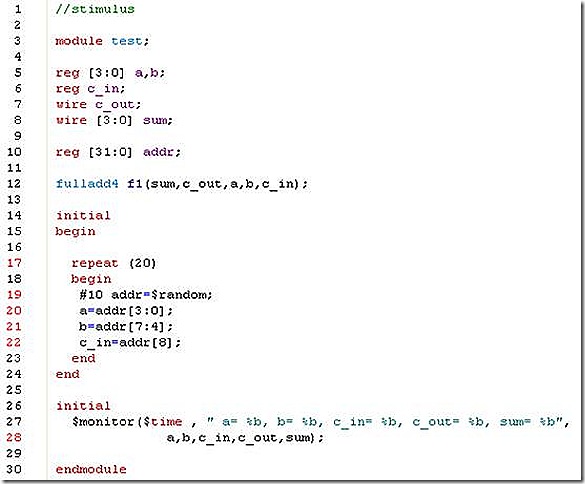
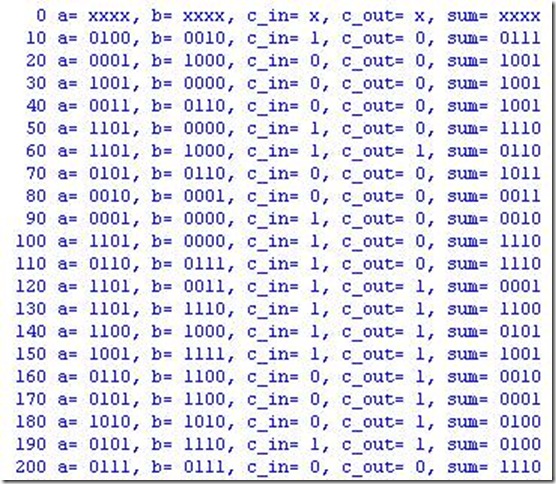
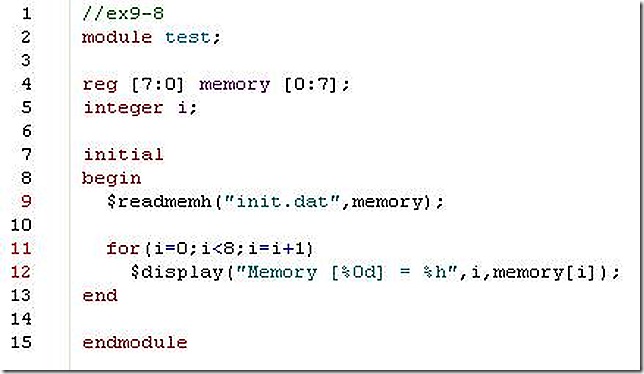
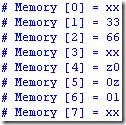
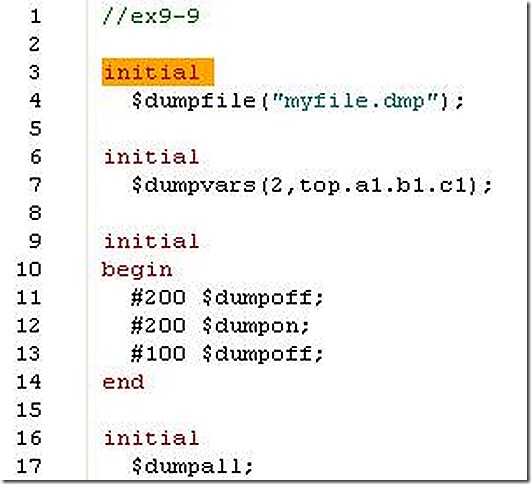

 浙公网安备 33010602011771号
浙公网安备 33010602011771号